Bird Feeder Options – State of New Jersey Says – What to Expect
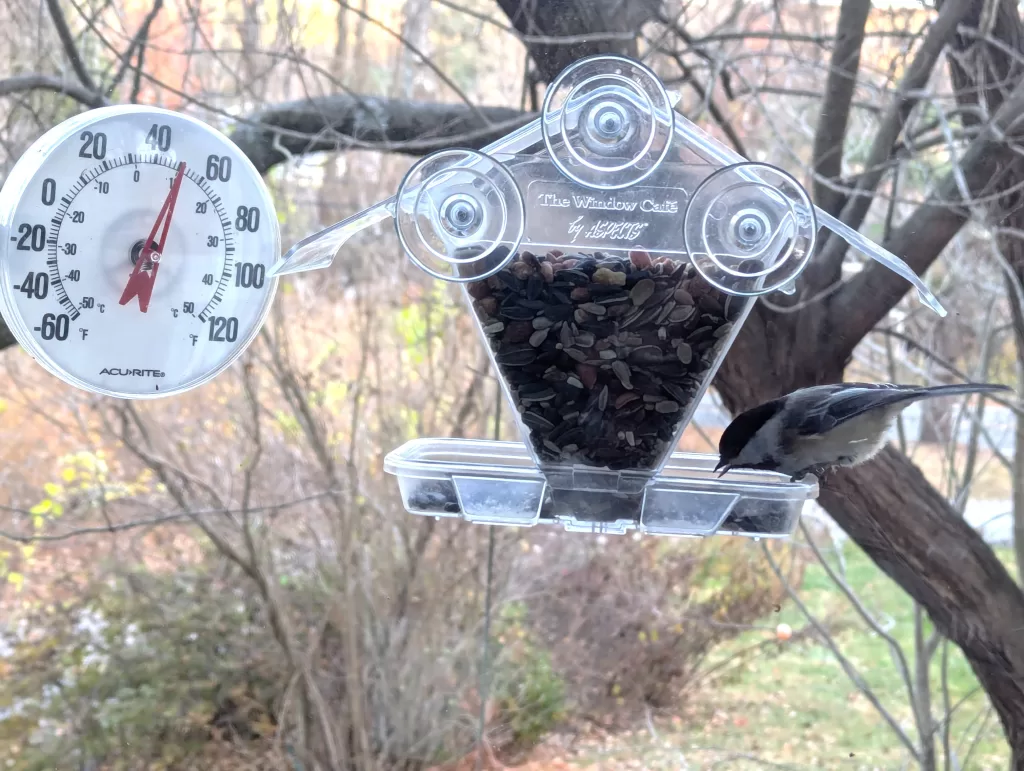
I like to feed birds during the winter but I wait until the weather changes from warm “Indian Summer” days and nights to cool autumn weather. That’s because bird feeders can attract bears and other animals, and I don’t want to attract them to my property. When the weather turns cold, bears become less active, and it’s safer to start feeding the birds. I start with my window feeder, which is filled with premium bird seed that attracts a wide variety of birds. Next I will hang a feeder from a tree branch with seed I buy in bulk (40 lb. bag) and another with a suet cage. I enjoy watching the birds come and go, and I feel good knowing that I’m helping them to survive the winter.
Within minutes of setting out my feeder, a black-capped chickadee was feasting on the seeds and fruit. Chickadees are one of my favorite birds to watch. They are so curious and enjoy eating the seeds from the feeder. I am so happy to provide food for them and other birds in the neighborhood.
“Feeding birds in North Jersey is a fulfilling hobby, but it’s also a serious commitment. Birds attracted to your feeder become dependent on the food you provide”
rt23 staff
I enjoy feeding the birds during the winter months because it is a welcome change from the clouds and chill of winter. I attach my bird feeder to my office window, and I love seeing the birds come and go. It is almost like having pets! I find the birds’ antics to be very entertaining, and I am amazed by the different sizes and colors of the birds that visit my feeder providing a delightful background to my workday.
I have two cats that love to watch the birds at the feeder. At first, my cats would try to pounce on the birds whenever they landed on the window feeder. The birds would take off in a flurry of feathers, and my cat would leap at the window feeder, trying to catch them but be repulsed by the glass, they would soon give up and retreat. After a while, the birds realized that my cat was no threat to them, and they would land on the feeder and eat their fill. My cat also realized that he could not catch the birds, and he would sit and watch them eat. The birds and the cats learned to ignore each other, and my cat now enjoys watching the birds at the feeder, I call this “cat tv”.
Feeding birds in North Jersey is a fulfilling hobby, but it’s a serious commitment. Birds that are attracted to your feeders become dependent on the food you provide during the winter. They may starve if the feeder is not regularly filled with fresh seed. You should also keep your feeders clean and free of mold, and be sure to clean up any spilled seed. It’s a good idea to place your feeders in an area where you can easily observe the birds, but not too close to your house or other structures where they could be a nuisance.
I start out using a window feeder. It’s a plastic dish that attaches to the window with soft rubber suction cups. The trick is to heat the rubber cups in hot water, dry them thoroughly, and rub them a bit with your thumb before attaching them to a clean glass window. A few days after the window feeder, I hang a tube feeder from a nearby tree branch. And finally, I hang the suet feeder from the tree branch when high daytime temperatures dip to about 30°F. These two feeders I keep filled until April. The window feeder needs refilling about two to three times a week,
Bird Feeder Options
I have three types of feeders to attract a variety of birds: window mount, tube feeder, and suet cage. I enjoy feeding the birds during the winter months. It is a welcome change from the clouds and chill of winter days. I attach my bird feeder to my office window, and I love seeing the birds come and go. It is almost like having pets! I find the birds’ antics to be very entertaining, and I am amazed by the different sizes and colors of the birds that visit my feeder. The birds provide a delightful background to my workday. I especially enjoy watching the cardinals and blue jays. The cardinals are so beautiful with their bright red plumage, and the blue jays are so vocal and active. I find it very relaxing to watch the birds and listen to their songs.
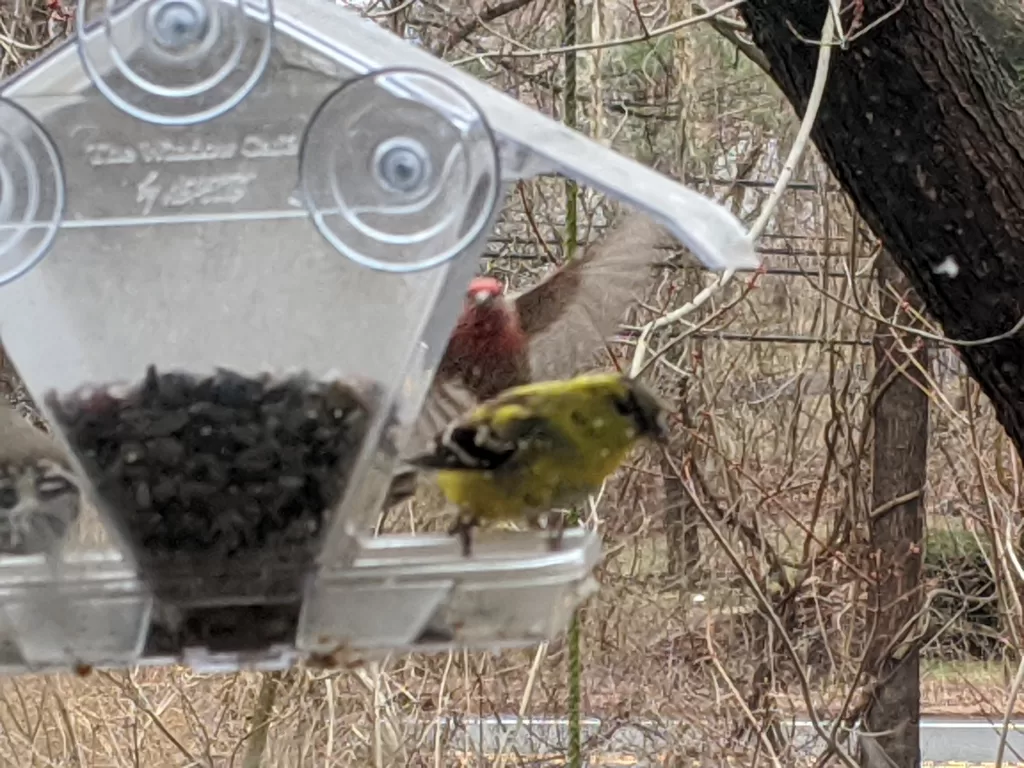
When attached to a clean window, window feeders are strongly affixed to the surface, providing an up close and personal experience. I use a premium fruit and nut mix to attract more exotic birds. The feeder is easy to fill and clean, and the birds love it!
I use a few different types of feeders for my birds (“my birds” haha). I hang a Kingsyard Metal Bird Tube Bird Feeder from a tree branch near my window. Tuber feeders are very common with a wide variety and quality. The Kingsyard Metal Bird Tube Bird Feeder has metal caps and perches with a thick plastic tube. I have used this FOR a few years and am satisfied with the price/quality. For this feeder I buy a 40 pound bag of Royal Wing classic mix wild bird food from the local tractor supply. I look for a 40 pound bag with a good mix of oily seeds like sunflower seeds. A forty pound bag will last me four to five months.
Another type of feeder that I use is a suet cage. Some bird’s diets require more than just seed. Suet fills this need attracting insectivores including woodpeckers. Bears also love suet, so it is the last birdfeeder I set out. I wait until the nights are cold and the daytime temperatures are below 50° F. The suet feeder attracts insectivores such as woodpeckers and wrens. I fill this with suet once a week. I buy several suet cakes and store them in the freezer until I need them. They are easier to handle when frozen because they are made from animal fat and are very greasy when warm. I find that frozen suet cakes are easier to handle than warm ones because they are more solid and less likely to crumble.
Leave a Reply
State of New Jersey Says:
I found these tips on feeding birds from the NJDEP a bit overcautious. Although they are sensible, I don’t follow all of them. Living in the forest in northern Passaic County, we have many bears. Over the years, I have developed my own routines and procedures. I don’t wait until December 1st to start feeding the birds; I start after the first few frosts. In the spring, I wind down after my suet feeder disappears, which indicates bear activity. I don’t bring my feeders inside at night, but its true that is when they are raided. I also don’t use spill trays; there are a lot of shells, but the spilled seed is eaten by foraging morning doves and turkeys.
“Avoid feeding birds if you live in an area frequented by black bears. Birds will
NJDEP
survive without the supplemental seed that attracts bears.”
| NJ Department of Environmental Protection Division of Fish and Wildlife Guidelines – Avoid feeding birds if you live in an area frequented by black bears. Birds will survive without the supplemental seed that attracts bears. – If you choose to feed birds, do so during daylight hours only, between December 1 and April 1, when bears are least active. – Use spill pans to prevent seeds from reaching the ground. – Clean up spilled seeds and shells daily. – Store birdfeed within a secure location where bears are unlikely to see or smell it. – Suspend feeder from a free-hanging wire, making sure it is at least 10 feet off the ground and at least 10 feet away from the trunk of a tree. – Do not suspend feeders off of the house or deck. – Keep in mind that black bears are excellent climbers! – Bring bird feeders indoors at night. – Suspend feeder from a free-hanging wire, making sure it is at least 10 feet off the ground and at least 10 feet away from the trunk of a tree. – Seed Catcher Resources SeedHoop Contact: Ann Pritt Phone: (800) 793-1815 E-mail: seedhoop@gmail.com Website: http://www.seedhoop.com/Bear_Damage.html |
Leave a Reply
What to Expect
After you install and fill your bird feeder with food, it may take a few days for birds to find it. Be patient; they will eventually show up. Birds are amazing creatures. They are able to find food sources that they will return to year after year. Once they find your bird feeder, they will undoubtedly attract more birds. The same birds seem to appear year after year, remembering the location of food.
“A birdfeeder in your yard or at your window can provide hours of entertainment and enjoyment.”
rt 23 staff
When you have bird feeders, you can expect a mess around them. This is because birds are messy eaters, and they tend to drop seeds and other food items on the ground. They also leave behind droppings, which are a natural part of the digestive process. It’s not the end of the world, but it is to be expected.
Birds are almost crepuscular in their reactions to the changing of light. They are most active at dawn and dusk, and are attracted to bird feeders at those times. In any case expect early visitors at your birdfeeder beginning at fist light.
Birds are attracted to feeders and will quickly empty them, so feeders should be regularly refilled. Birds can almost act as weather forecasters, flocking to the feeders before bad weather. It is not uncommon to see birds at the feeders in the middle of a downpour. In the winter, birds are especially vulnerable to starvation, so it is important to keep the feeders full.
A birdfeeder in your yard or at your window can provide hours of entertainment and enjoyment. You can watch the birds flutter and squabble over the seeds. You can learn to identify the different species that visit your feeder. And you can enjoy the beauty of the birds as they flit about in the sunlight. At the very least, a birdfeeder can help to brighten up the cold and dark winter days.
https://www.rt23.com/Scenery/birds.shtml

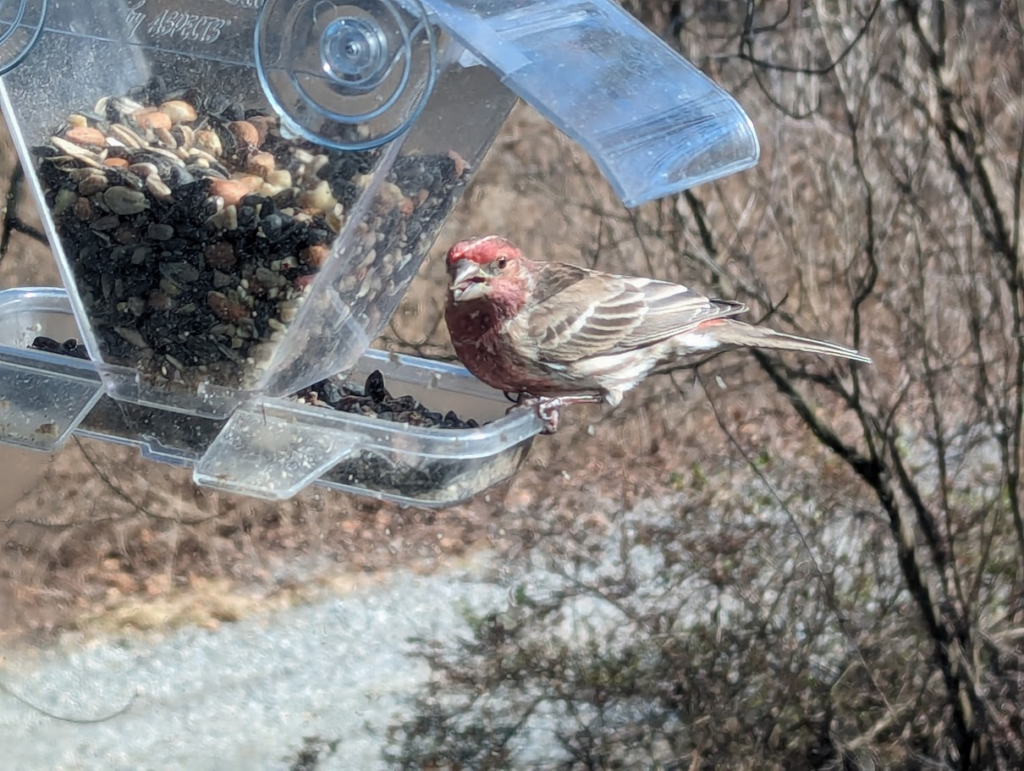
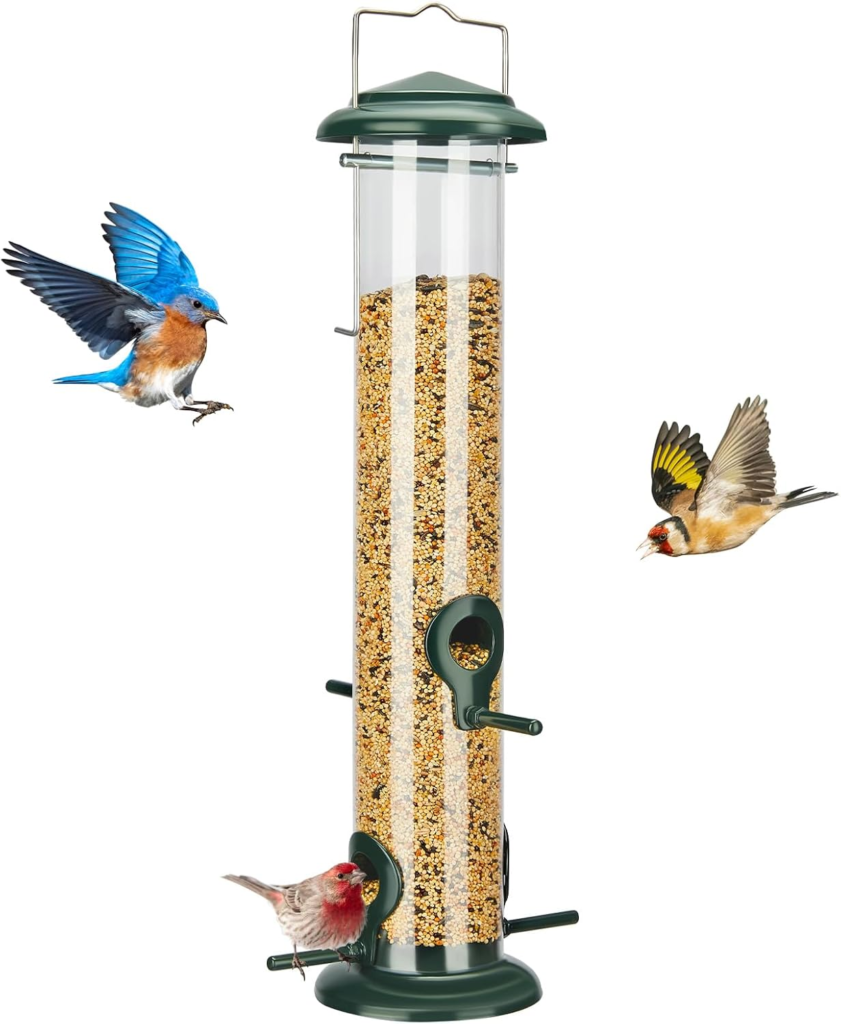
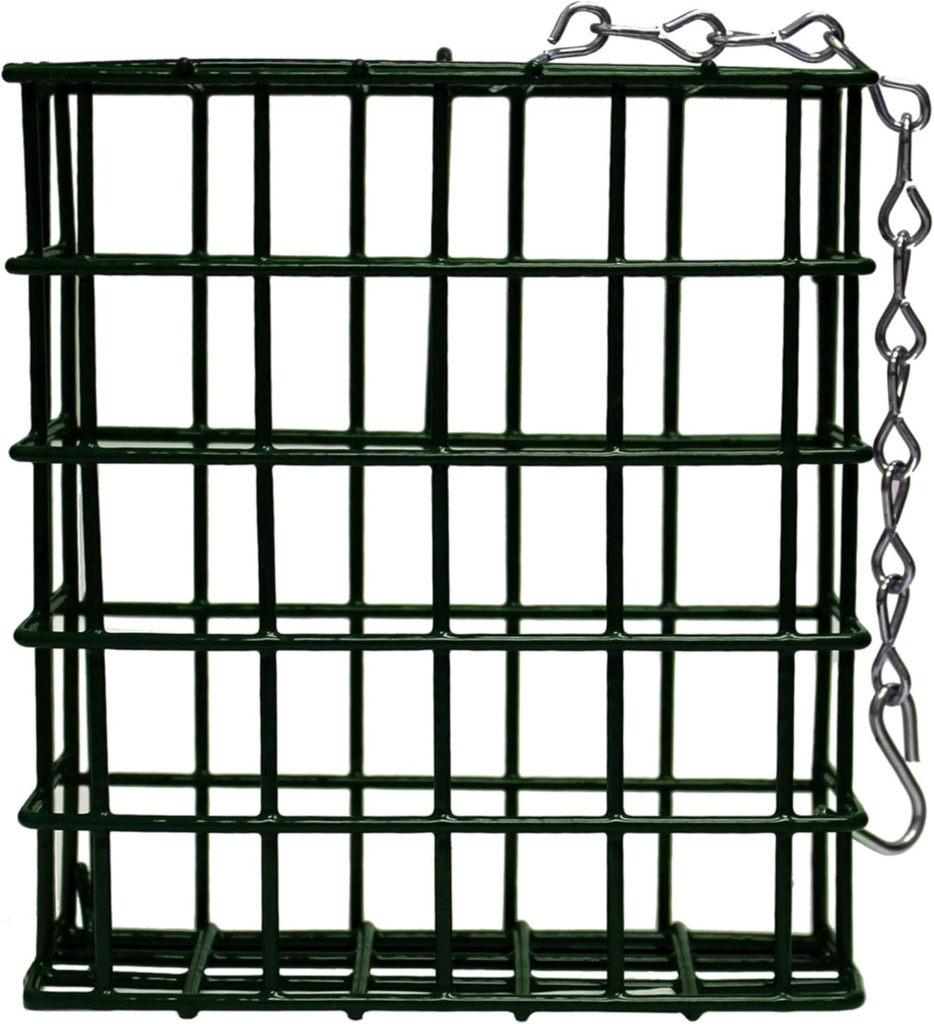


Leave a Reply